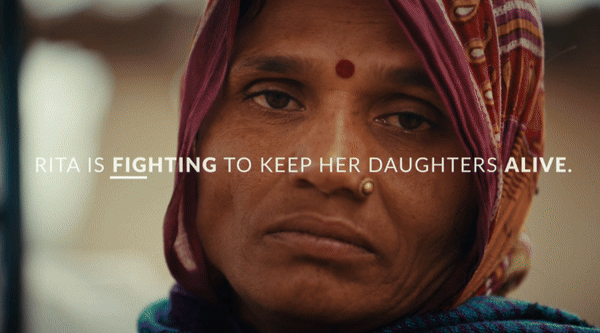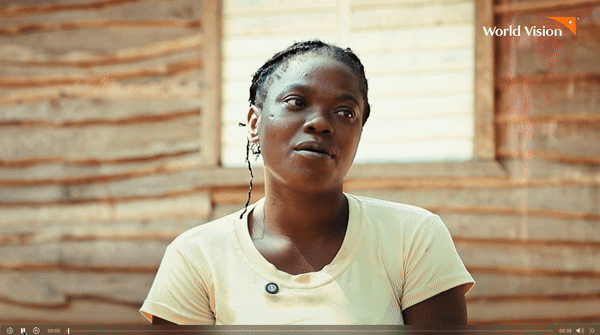ENOUGH. End Child Hunger
A global hunger crisis is erasing childhoods long before it made headlines. ENOUGH was built to shift that quiet devastation into undeniable presence.
This campaign was designed to raise awareness, mobilise belief, and awaken action across the world.
Client: World Vision
Agency: OX FOR GOOD
Product: Multi-year campaign
Contribution: Creative Strategy, Creative Direction, Creative Development, Campaign Messaging, Audience Frameworks, Scriptwriting, Photography
Sunday and Blue
Blue wakes before the sun, knowing the weight he will carry is far more than his brother’s small frame. At nine years old, he lifts four-year-old Sunday onto his back and begins the long walk to school. The journey is slow, but it leads to one of the only reliable meals available to them. That daily meal is what keeps hope present in their lives. It is a meal that helps Sunday fight to regain strength.
Sunday lives with Severe Acute Malnutrition. The condition has made walking almost impossible. The journey to school, which should be simple for most children, has become a daily act of endurance for two young brothers in Turkana. Blue carries him because there is no other way for him to get there. For their family, the only other option for food is to search for wild berries. The berries offer a brief relief from hunger but often cause illness. There are no stable food systems around them, and climate change has stripped away many of the resources their community once depended on.
This story is a reflection of how hunger shapes lives in ways that rarely make headlines. It is also a story of quiet strength. Blue’s daily walk with Sunday shows the resilience that children carry when the world around them has so few supports left. It invites us to look closer. To understand the complexity of hunger. To see both the urgency of the need and the humanity that endures within it.
Through the work of World Vision and the support of donors and sponsors, interventions like mobile health clinics and school meal programs help children like Sunday regain their strength and return to the classroom. His story is not only about crisis. It is about the courage that lives inside it and the responsibility to pay attention.
Building relevance through entry points
Child hunger is not a new issue. Its persistence has made it dangerously easy to overlook. The entry point strategy focused on anchoring hunger within the causes and concerns that already shape public attention. By linking hunger to familiar narratives, we created emotional and intellectual proximity that built stronger pathways to action.
01 Hunger exposes children to violence and exploitation.
Hunger doesn’t just leave children without food; it leaves them vulnerable to violence and exploitation. Desperate families suffering severe food shortages can push children into early marriages, child labour, and even military recruitment in a desperate attempt to survive. Partnering with local faith leaders, we work to protect these children by providing food and resources that help prevent these tragic choices.
01Climate Change is accelerating this crisis.
Climate change is accelerating hunger, creating more severe and frequent food shortages. Extreme weather disrupts farming and erodes food security, leaving more children facing hunger. By helping communities adapt to climate change and regenerate their environment, we strengthen their resilience to climate shocks and ensure they have a reliable supply of food long-term.
03 Conflict drives hunger and malnutrition worldwide.
Conflict is a major driver of hunger, displacing families and destroying food systems. In war zones, farmers often abandon their fields to fight or flee, leaving crops unharvested.
Food cannot be transported or sold, leading to severe shortages. We provide urgent relief to address hunger in conflict areas and support to restore farming and rebuild food systems for long-term recovery.
04 Rising costs of food and fuel are increasing hunger.
Soaring food and fuel prices are pushing more families into hunger. As costs rise, families struggle to afford basic necessities, leading to increased malnutrition. By supporting small businesses, enhancing local agriculture, and providing vital resources, we help families navigate the impact of high prices and improve their access to food.
Establishing personal relevance with parents
Wave 2 of the campaign centred on creating a closer emotional and practical bridge between the hunger crisis and the daily experiences of parents. The strategy focused on shared concerns around children’s wellbeing, education, and safety. By grounding the issue in universal parental hopes and fears, the campaign made a distant crisis feel present and personal. The goal was not to overwhelm but to build understanding and connection, helping parents see how their support could protect and sustain the futures of children like their own.
Approach
01
Creative Strategy
The ENOUGH campaign required a unified narrative that could bridge internal alignment and public mobilisation. I developed messaging frameworks that clarified the campaign’s purpose, positioning, and impact, creating a shared language across multiple internal teams.
This included articulating doorways of relevance to help audiences connect their own concerns to the hunger crisis, defining entry points for donor engagement, and shaping narrative pillars that grounded the campaign in both urgency and hope.
02
I led the creative vision and storytelling direction for the campaign, scripting flagship films, crafting story arcs, and guiding narrative tone across channels.
Creative Direction
My role involved ensuring narrative integrity across messaging touchpoints, so the campaign carried emotional weight without losing strategic clarity.
03
I helped bring the campaign narrative to life through digital ads, campaign copy, story curation, and photography. I travelled to Kenya during the first campaign wave to document stories across refugee and pastoralist communities, tracing how hunger intersected with conflict, displacement, and climate change.
Creative Development
These stories shaped the campaign’s public face and deepened its authenticity.












